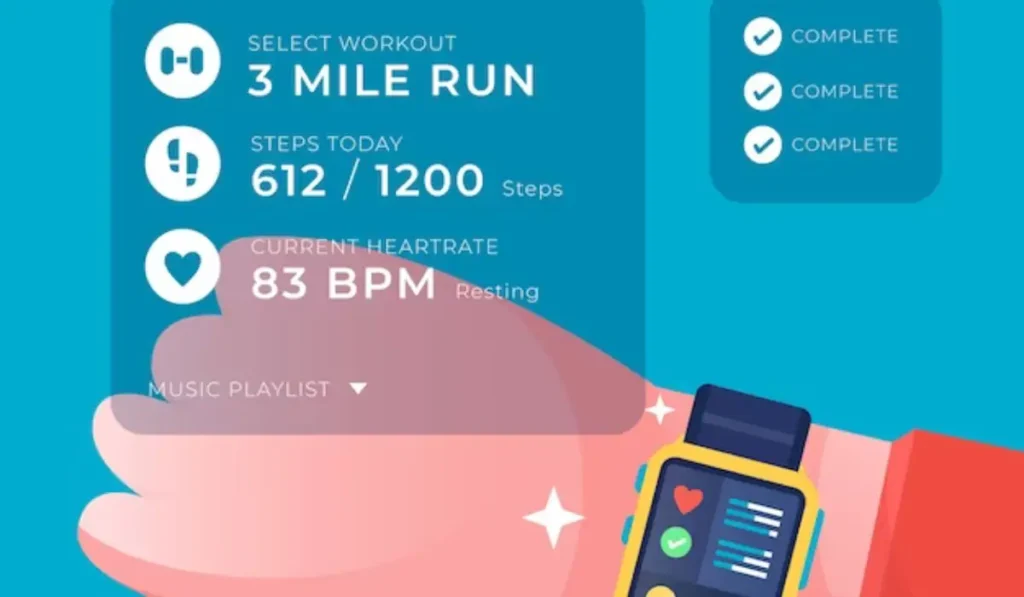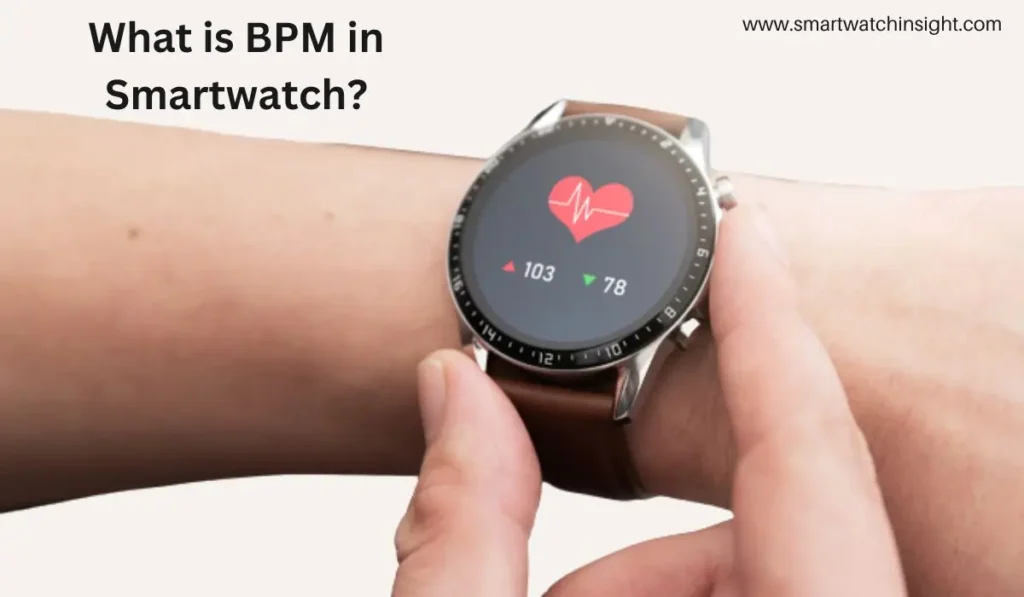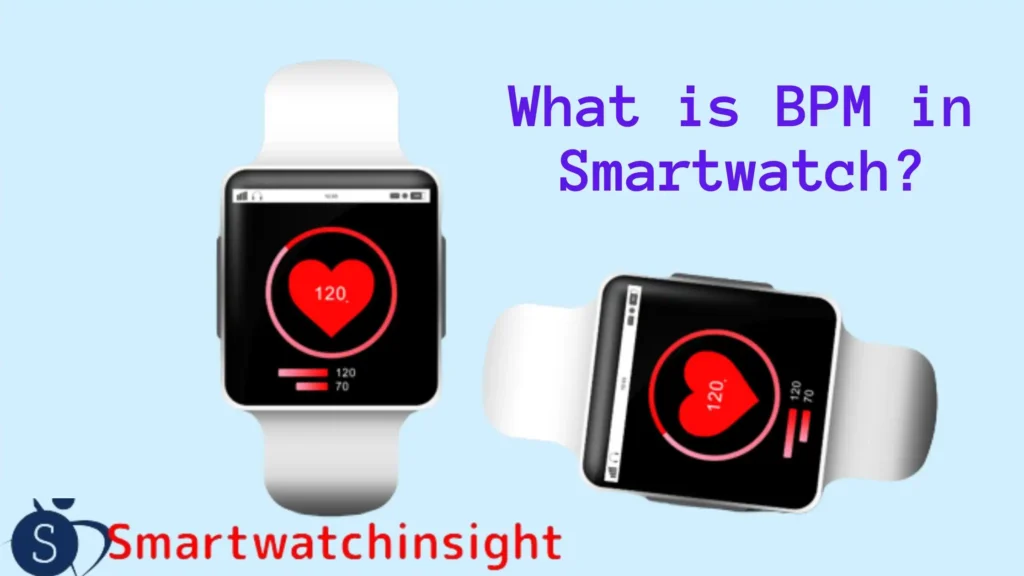Do you know What is BPM in Smartwatch and how it works? Smartwatches have revolutionized the way we track our health and fitness goals. They’ve become our trusty companions, helping us stay on top of our well-being with ease and convenience.
These versatile devices offer a wide range of features, including heart rate monitoring. One of the key metrics tracked by smartwatches is BPM, which stands for beats per minute.
In this article, we will explore What is BPM in Smartwatch and its importance, and how it is measured. So, let’s dive in and discover the fascinating world of BPM monitoring in smartwatches.
Full Form of BPM in Smartwatch
The full form of BPM in a smartwatch is “Beats Per Minute.” This term represents the measurement of the number of heartbeats that occur within a span of one minute. It serves as a crucial indicator of heart rate and is widely used to monitor and track cardiovascular activity.
What is BPM in Smartwatch?

What exactly is BPM in a smartwatch? BPM stands for beats per minute, and it refers to the measurement of your heart rate.
Smartwatches equipped with heart rate monitoring capabilities allow you to track your BPM in real-time, giving you valuable insights into how your heart rate fluctuates throughout the day and during physical activities.
Several factors can influence your heart rate, including your age, fitness level, and stress levels.
Typically, a young and healthy adult may have a resting heart rate ranging from 60 to 70 BPM, while an older adult or someone who is less physically active might have a resting heart rate between 80 and 90 BPM.
Smartwatches serve as a useful tool for monitoring your heart rate, but it’s important to remember that they are not medical devices.
If you have any concerns regarding your heart health, it is always advisable to consult with your healthcare provider.

How BPM Works in Smartwatches?
Smartwatches utilize various sensors, such as photoplethysmography (PPG) sensors, to monitor BPM. These sensors measure changes in blood volume by emitting and detecting light.
The data collected is then processed using advanced algorithms to provide real-time BPM readings on the smartwatch display.
How to Check Your BPM on a Smartwatch
Now, let’s explore how you can check your BPM using a smartwatch. The process is generally straightforward:
- Turn on your smartwatch.
- Open the heart rate monitoring app or feature.
- Place your finger on the optical sensor located on the back of the watch.
- Allow the watch a few seconds to measure your heart rate.
- The BPM measurement will be displayed on the screen.
What is a Normal BPM?
So, what is considered a normal BPM? The normal range can vary depending on factors such as age, fitness level, and stress levels. As a general guideline, the average resting heart rate for adults typically falls between 60 and 100 BPM.
If your BPM consistently falls above or below this range, it might be an indication of an underlying health condition. It’s essential to consult with a healthcare professional if you have any concerns about your BPM.
What is Sedentary Reminders on a Smartwatch?
You may also like
Benefits of Monitoring BPM in Smartwatches
Monitoring BPM through smartwatches offers several benefits, including:
- Early detection of irregular heart rhythms
- Tracking cardiovascular fitness levels
- Providing insights into stress levels
- Motivating individuals to maintain an active lifestyle
- Assisting in identifying potential health issues
What are the Benefits of BPM Monitoring in Smartwatch
Monitoring BPM through smartwatches offers several advantages for users:
1. Early Detection of Irregular Heart Rhythms: Smartwatches can detect irregular heart rhythms and alert users to seek medical attention, potentially aiding in early diagnosis and treatment.
2. Cardiovascular Fitness Tracking: By tracking BPM during physical activity, smartwatches can help users monitor their cardiovascular fitness levels and optimize their workouts accordingly.
3. Personalized Activity Recommendations: Smartwatches that monitor BPM can provide personalized activity recommendations based on the user’s heart rate data, helping them achieve their fitness goals effectively.
4. Enhanced Stress Management: With BPM monitoring, smartwatches can assist users in managing their stress levels by providing real-time feedback on heart rate variations and suggesting relaxation techniques.
5. Comprehensive Sleep Analysis: By tracking BPM during sleep, smartwatches can offer insights into sleep quality, helping users make improvements to their sleep patterns and overall well-being.
What is a Good Heart Rate by Age?
The normal resting heart rate (RHR) range varies according to age, gender, and overall health. As we age, our heart’s ability to pump blood decreases, which can lead to a higher resting heart rate.
Here is a general guideline for what is considered a good heart rate by age:
| Age | Resting Heart Rate Range (bpm) |
|---|---|
| Newborn | 100-160 |
| 1-2 years | 90-140 |
| 3-5 years | 80-120 |
| 6-10 years | 70-110 |
| 11-17 years | 60-100 |
| 18-39 years | 60-80 |
| 40-59 years | 60-85 |
| 60-79 years | 60-90 |
| 80+ years | 60-95 |
It’s important to note that these are just general guidelines, and your individual heart rate may vary. If you have any concerns about your heart rate, you should talk to your doctor.
What’s the Difference Between BPM and Resting Heart Rate(RHR)?
BPM stands for beats per minute. It is a measurement of the number of times your heart beats in one minute. Resting heart rate (RHR) is the number of times your heart beats per minute when you are at rest.
The main difference between BPM and RHR is that BPM is a general measurement of your heart rate, while RHR is a specific measurement of your heart rate when you are at rest.
There are a number of factors that can affect your BPM, including:
- Activity level: Your BPM will increase when you are exercising.
- Stress: Your BPM may increase when you are stressed.
- Medications: Some medications, such as caffeine, can increase your BPM.
- Medical conditions: Certain medical conditions, such as hyperthyroidism, can increase your BPM.
Your RHR is typically lower than your BPM. A normal RHR for an adult is between 60 and 100 bpm. However, your RHR may be lower or higher depending on your age, fitness level, and overall health.
There are a number of things you can do to improve your RHR, including:
- Exercise regularly: Exercise helps to strengthen your heart and improve its efficiency, which can lead to a lower RHR.
- Lose weight: If you are overweight or obese, losing weight can help to lower your RHR.
- Reduce stress: Stress can raise your RHR, so it’s important to find ways to manage stress in your life.
- Quit smoking: Smoking can raise your RHR, so quitting smoking is a good way to lower it.
- Get enough sleep: Getting enough sleep helps to keep your body’s systems functioning properly, including your heart.
If you are concerned about your RHR, you should talk to your doctor. They can help you determine if your RHR is normal and recommend ways to improve it if necessary.
FAQs :
Q. What is BPM in Smartwatch?
BPM stands for beats per minute, which refers to the number of heartbeats within a minute.
Q. How does a smartwatch measure BPM?
Smartwatches use sensors, such as PPG sensors, to measure BPM. These sensors emit and detect light to capture changes in blood volume, which are then analyzed to determine BPM.
Q. Can smartwatches detect heart conditions?
Smartwatches can provide insights into heart health and detect irregular heart rhythms. However, they are not intended to replace medical diagnoses and should be used as supportive tools.
Q. Is 120 bpm normal?
A normal resting heart rate for an adult is between 60 and 100 beats per minute (bpm). A resting heart rate of 120 bpm is considered high
Q. Why is BPM important in a smartwatch?
BPM, or beats per minute, is a measurement of your heart rate. Your heart rate is the number of times your heart beats in one minute. It is an important indicator of your overall health, and it can also be used to track your fitness progress.
There are a number of reasons why BPM is important in a smartwatch. First, it can help you track your fitness progress. By tracking your BPM over time, you can see how your heart rate changes as you become more fit. This can help you stay motivated and on track with your fitness goals.
Second, BPM can help you identify signs of overtraining. If your BPM is consistently high, it may be a sign that you are overtraining. Overtraining can lead to injuries, so it is important to listen to your body and take breaks when you need them.
Third, BPM can be used to monitor your health. If your BPM suddenly spikes, it may be a sign of a medical problem. For example, a sudden increase in heart rate can be a sign of atrial fibrillation, a type of irregular heartbeat. If you notice any sudden changes in your BPM, it is important to see a doctor.
Overall, BPM is an important measurement of your heart health. By tracking your BPM with a smartwatch, you can stay informed about your overall health and fitness progress.
Conclusion
BPM monitoring in smartwatches has revolutionized the way individuals track their heart health. With advanced sensor technology and algorithms, smartwatches provide convenient access to real-time BPM readings.
However, it is important to remember that smartwatches are not substitutes for medical advice. They should be used as supportive tools to complement professional healthcare guidance. By incorporating BPM monitoring into our daily lives, we can gain valuable insights into our cardiovascular fitness and overall well-being.

